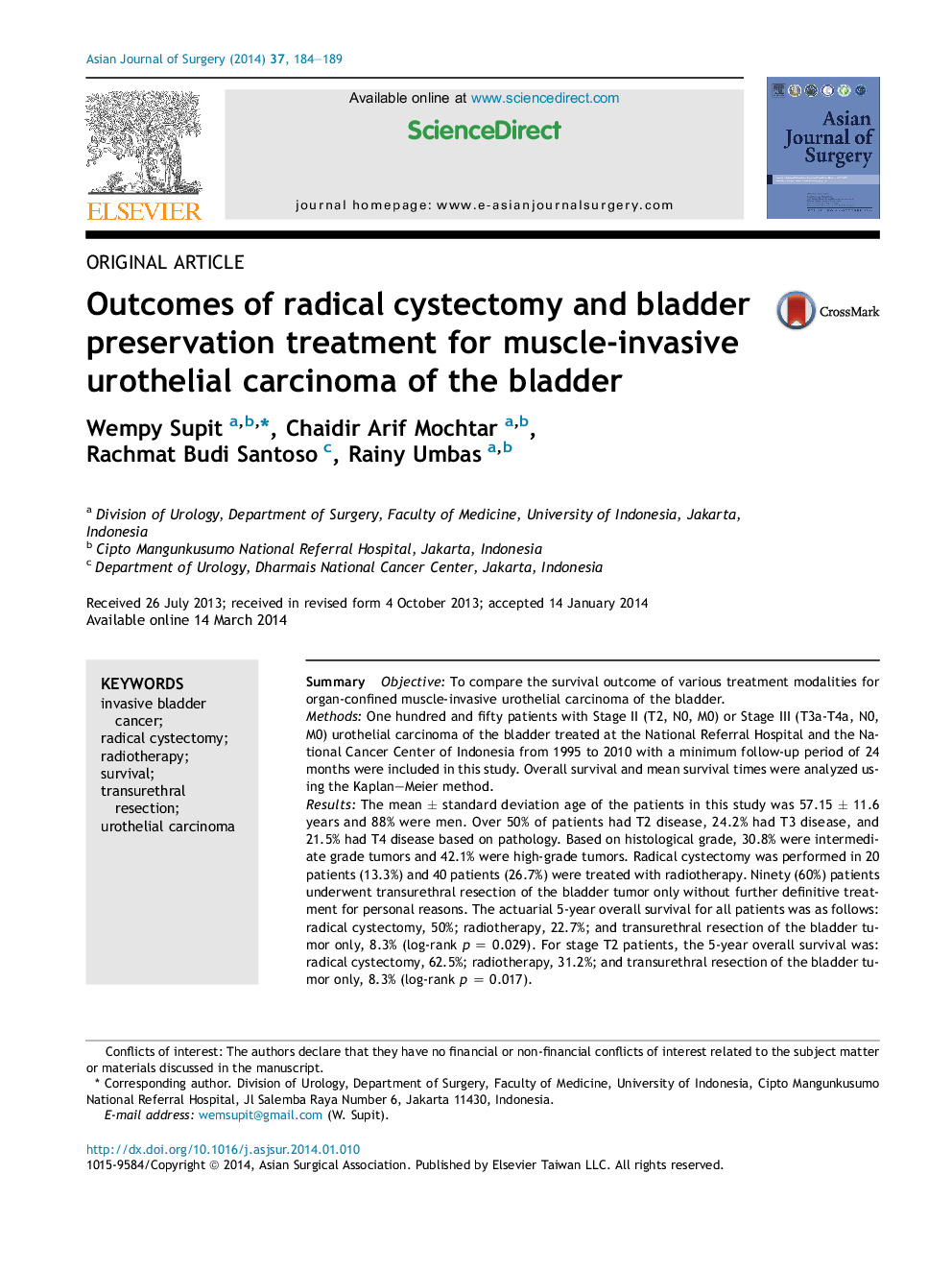| Article ID | Journal | Published Year | Pages | File Type |
|---|---|---|---|---|
| 4282589 | Asian Journal of Surgery | 2014 | 6 Pages |
SummaryObjectiveTo compare the survival outcome of various treatment modalities for organ-confined muscle-invasive urothelial carcinoma of the bladder.MethodsOne hundred and fifty patients with Stage II (T2, N0, M0) or Stage III (T3a-T4a, N0, M0) urothelial carcinoma of the bladder treated at the National Referral Hospital and the National Cancer Center of Indonesia from 1995 to 2010 with a minimum follow-up period of 24 months were included in this study. Overall survival and mean survival times were analyzed using the Kaplan–Meier method.ResultsThe mean ± standard deviation age of the patients in this study was 57.15 ± 11.6 years and 88% were men. Over 50% of patients had T2 disease, 24.2% had T3 disease, and 21.5% had T4 disease based on pathology. Based on histological grade, 30.8% were intermediate grade tumors and 42.1% were high-grade tumors. Radical cystectomy was performed in 20 patients (13.3%) and 40 patients (26.7%) were treated with radiotherapy. Ninety (60%) patients underwent transurethral resection of the bladder tumor only without further definitive treatment for personal reasons. The actuarial 5-year overall survival for all patients was as follows: radical cystectomy, 50%; radiotherapy, 22.7%; and transurethral resection of the bladder tumor only, 8.3% (log-rank p = 0.029). For stage T2 patients, the 5-year overall survival was: radical cystectomy, 62.5%; radiotherapy, 31.2%; and transurethral resection of the bladder tumor only, 8.3% (log-rank p = 0.017).ConclusionIn our series, radical cystectomy had a superior outcome to radiotherapy or transurethral resection of the bladder tumor only, comparable with results reported elsewhere. Radical cystectomy should be offered as the gold standard treatment for organ-confined muscle-invasive urothelial carcinoma of the bladder.
